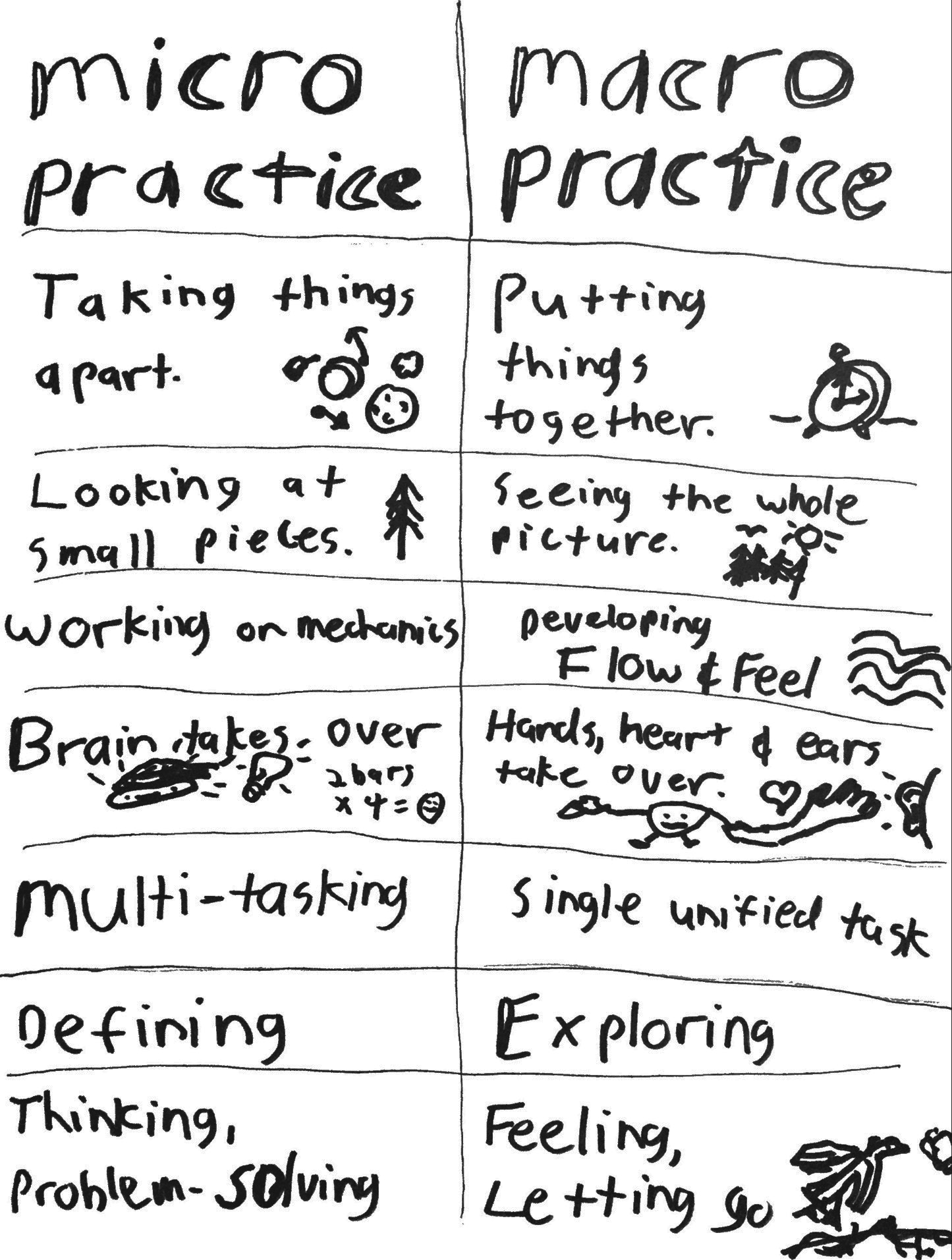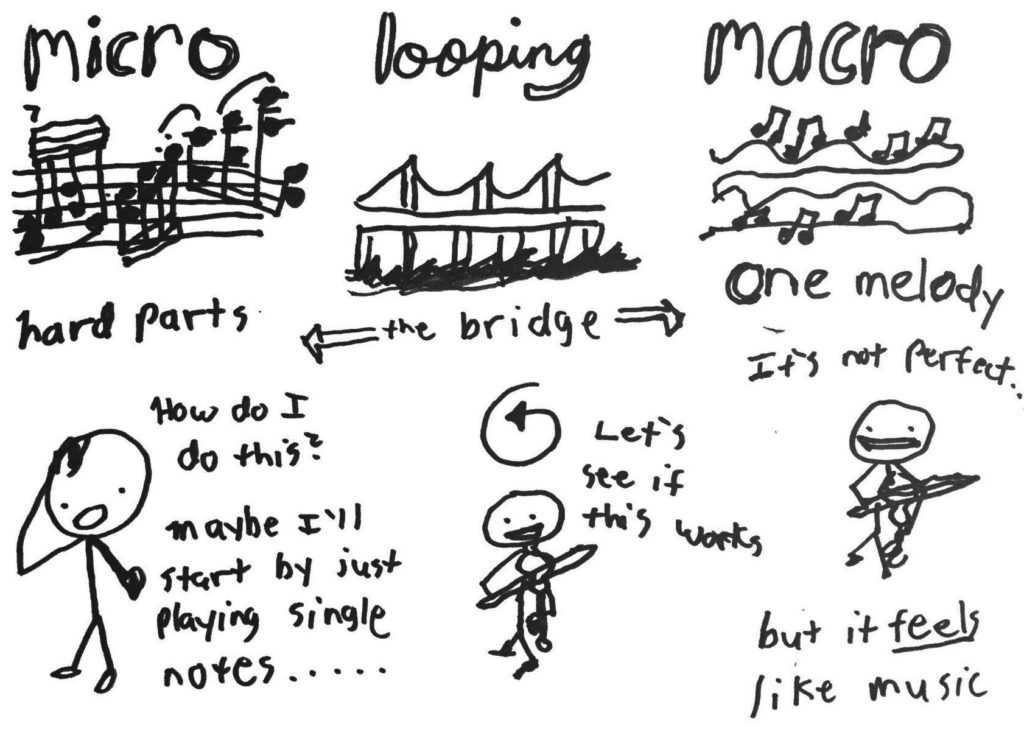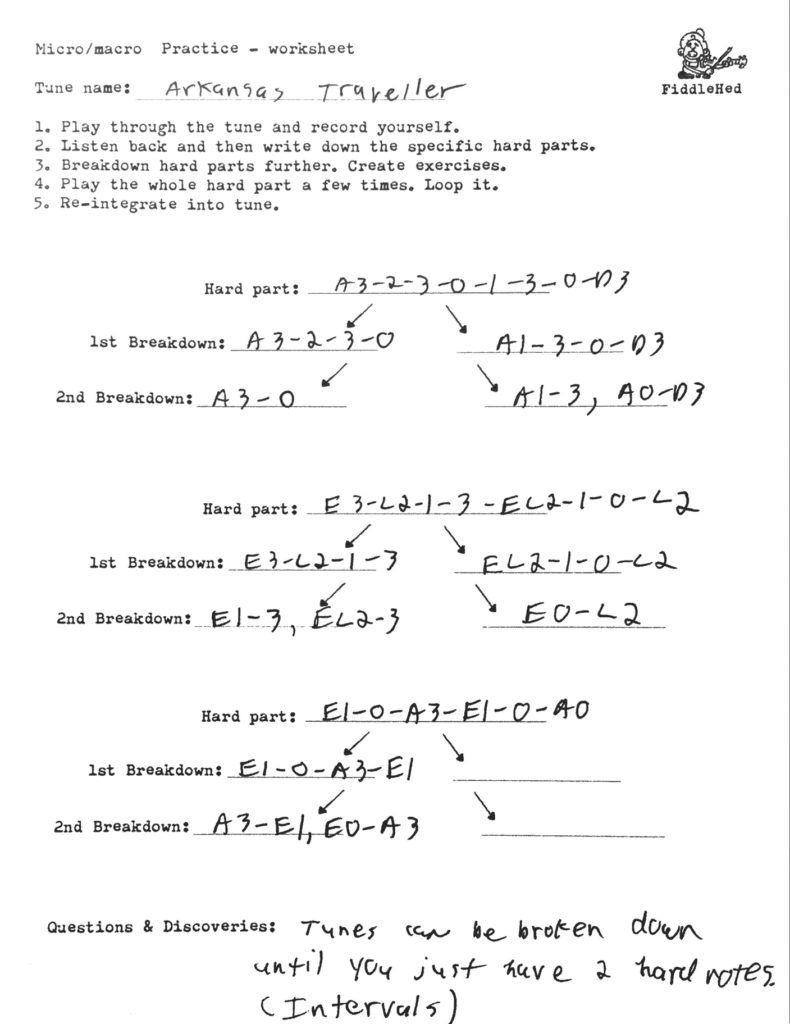Learning how to practice is the heart of the FiddleHed method. There are two complementary ways of working on music: micro-practice and macro-practice.
Micro-practice is focusing, figuring things out and training your body what to do. Macro-practice is putting things together, letting go and just playing.

In micro-practice we focus on the motion of our hands, trying to understand and map out what we have to do. We try do a certain part with different fingerings, or different bowings. We are tinkering and fiddling with it.
Looping small parts is the bridge between micro and macro-practice. If you take a hard part and loop it, you make a transition from thinking to playing.

Micro-practice Strategies
- Find out what’s really hard and practice that. It might just be one or two notes that you need to practice. Systematically take apart hard parts until you get to a very small difficult thing.
- Create exercises from difficult parts. In this way, fiddle tunes will teach you everything you need to know about playing.
- Slow practice with focus on mechanics.
- Practice awareness of body, breath and movement while playing.
Macro-practice Strategies
- Make it through the whole tune. Even if you have to start and stop, even if it doesn’t sound that good, JUST KEEP GOING.
- Accept mistakes. When in macro-practice mode, let go of the desire to fix your mistakes. Just keep playing.
- Record yourself. When you’ve played the tune a few times in a row, use the recording to find out what’s hard, what you need to practice. Try not to worry about your performance. Assume you will get better (if your practice)!
- Listen to the tune. Try to hear it in your head, or whistle, sing or hum it.
- Play along track practice. Use backing tracks as a fun way to play the whole tune. In order to do this, you have to know the tune well. A fun alternative to play-along tracks: play with a friend.
Here is a systematic approach:
- Play through the tune and record yourself. (macro-practice)
- Listen back and ask yourself, “What was hard for me?” Write down the specific hard parts (micro-practice).
- Breakdown hard parts further to find out what’s really hard. Create exercises by adding rhythms, transposing and/or changing note order.
- Play the whole hard part a few times. Loop it.
- Re-integrate into tune.
Here is a worksheet you can print and use to help you learn and utilize this practice strategy: Micro/macro practice worksheet
Here is an example of how to use the worksheet:

If you’re interested in seeing micro and practice in action, take these video lessons:
Both modes are necessary and complementary. Try to practice both ways every time you play.
Learn more about micro-practice and macro-practice in these lessons:
Micro And Macro Practice Strategies
How to Learn And Practice A Fiddle Tune.
Two ways I can help you level up your fiddling
- Sign up for the FiddleHed newsletter below.
- Sign up for the Free Two-week Trial. You’ll get full access to all courses and group lessons. Plus, I’ll send you some free lessons tailored to your current skill level.
Thanks for being here 🙏

The micro practice was so important for me today. I also was working on Swallowtail jig. Though I committed it to memory and played it a lot, today it sounded timid and boxy as you said. Really glad you mentioned the throwaway bow. I’ll do that last thing tonight just so I can end on a high note as you said earlier.
Good lesson – I really like this approach.
Merci 🙂
Makes sense to me! …and practicing both ways means there is absolutely no time during the day when I cannot practice.
Jim Ford